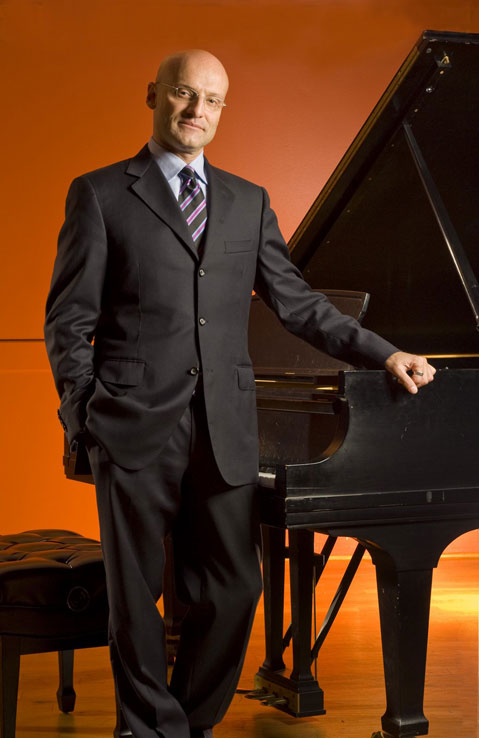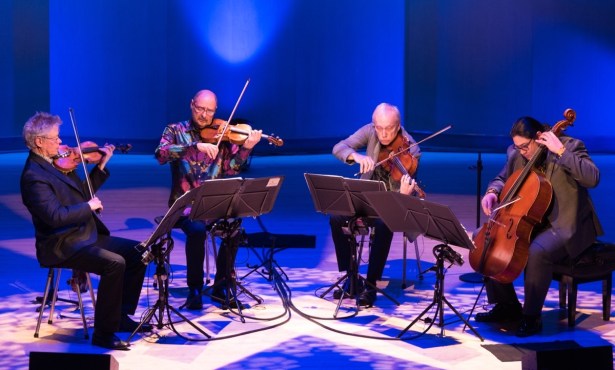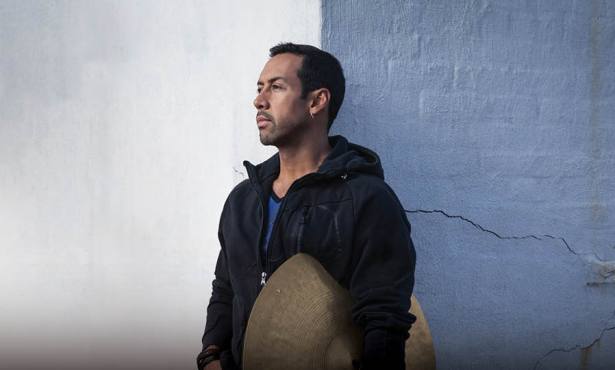St. Lawrence String Quartet Preview
An Interview with Cellist Christopher Costanza
The St. Lawrence String Quartet (SLSQ) carries innovation as its trademark and represents a powerful new fusion of contemporary and traditional tendencies in chamber music. Formed in Canada in 1989, the group has now been through a total of six members on its way to the current lineup, which features violinists Geoff Nuttall and Mark Fewer, violist Lesley Robertson, and cellist Christopher Costanza. (Fewer is replacing regular violinist Scott St. John, who will be attending the birth of his child. Good excuse!) As for their claims to prominence in the world of contemporary music, there’s a fairly substantial and impressive list of world premieres since 2008, including some big names such as Osvaldo Golijov and John Adams, both of whom have written pieces expressly for performance by the SLSQ. On the recording side of things, the group has released four CDs through EMI, featuring such canonical composers as Shostakovich, Tchaikovsky, and Schumann. In the works is a disc featuring the string quartet music of Josef Haydn.

The St. Lawrence String Quartet are in residence at Stanford this term, and for the program at Campbell Hall, which is presented by UCSB Arts and Lectures, they will be joined by pianist Robert Koenig, a UCSB faculty member, for the Quintet in G minor for Piano and Strings, Op. 57, of Shostakovich. I spoke with Chris Costanza from his office at Stanford last week.
Tell me about the Ravel quartet. His is a less familiar name on a string quartet program than some others. Yes, well, typically, a Ravel string quartet was understood as something to put on an LP with one of Debussy’s string quartets. This one is from 1901, and it is fairly straightforward, but there’s some interesting things going on in it, and we love playing it. There’s a slightly experimental 5/8 section and a great, driving energy to the final movement. With Ravel you tend to get an extended palette of musical colors. He uses mutes, effects on the fingerboard, and covered sounds all to get that great range.
I sometimes feel like the string quartet is a subset of classical composition that constitutes a separate world. Is that the case? Well, the string quartet does represent a special challenge to composers. That’s primarily because the four stringed instruments need to work together and sound okay, but some composers are still baffled by the form. You look at someone like John Adams, who is not afraid of anything, and who has written operas, and it still took him a while to work his way up to writing for string quartet. Even Beethoven was intimidated at first by the string quartets of Josef Haydn. If you look at the earlier writing of Beethoven for strings, they are mostly trios. Of course, eventually he came around, and ended up influencing everyone.
Is Beethoven an influence on any of these compositions? Of the two more recent pieces we are playing, the influence of Beethoven is most obvious in the Shostakovich quintet, where I would describe it as having enlarged the composer’s conception of the form.
And how would you describe the Haydn? Haydn’s Opus 20 quartet is a great favorite of ours. It’s a very groundbreaking work. In it Haydn distributes the material more equally among the instruments, so there are things like a really beautiful variation for the cello in the first movement that you might not expect in a string quartet from that time period. Also, you can’t talk about Haydn without mentioning his humor, which in this piece manifests in a number of ways, ranging all the way from some unexpected silences to the inclusion of a gypsy minuet.
4•1•1
The St. Lawrence String Quartet with Robert Koenig, piano, will perform Thursday, April 21, 8 p.m., at UCSB’s Campbell Hall. For tickets and info, call 893-3535 or visit artsandlectures.sa.ucsb.edu.



